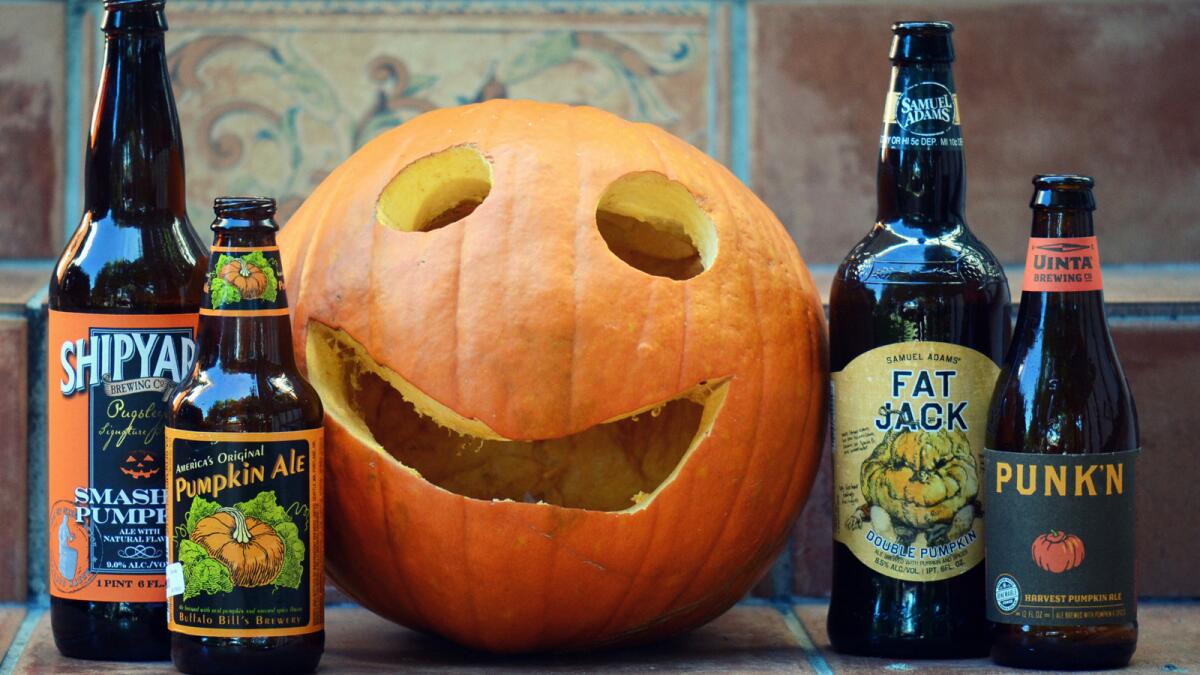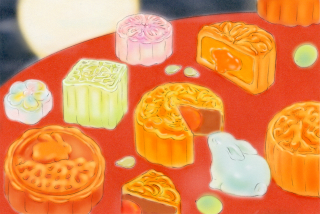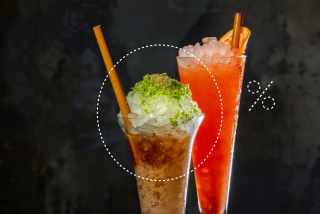In defense of pumpkin beer

A selection of pumpkin beers, an ale worthy of a try but often dismissed by craft beer snobs.
Mention pumpkin beer to nearly any group of craft beer drinkers and you’re sure to hear plenty of scoffing, lambasting and cries of “beer should taste like beer!”
Even if you’re not a fan of the sweet and spicy pie-in-a-glass pumpkin ales, you shouldn’t be so quick to dismiss them. They are a powerful tool in craft beer’s fight against big-beer monoculture.
Nobody is saying you have to like pumpkin beer. That’s perhaps the most laudable part of craft beer culture: Everybody’s preferences are respected.
“Drink what you love, and love what you drink” is a mantra, and drinkers shouldn’t have to suffer the eye-rolling of beer snobs because of what’s in their glass. However, you do have to respect pumpkin beer (and the people drinking it).
For many years it was the most popular style of craft beer. Before IPAs dominated the palates of the craft beer consumers, it was pumpkin ales that converted countless adventurous drinkers. Pumpkin ale also has some historical precedence. Early American settlers did in fact brew with pumpkin. They brewed with just about any source of sugar they could get their hands on.
>>Your Los Angeles craft beer guide
Pumpkin brews didn’t become a viable commercial style until the mid-’80s, when Buffalo Bill’s Brewery in Hayward, Calif., started selling Pumpkin Ale. Since those early experiments, pumpkin ale has grown to dominate seasonal beer styles, and it seems like more breweries are turning toward the gourds each year.
One of pumpkin beer’s greatest strengths is also the reason it generates so much animosity: It doesn’t often “taste like beer.” Many, if not most, examples of the seasonal style see brewers using a heavy hand with spices such as cinnamon, allspice, cloves and nutmeg. Combined with a weighty body and plenty of residual sweetness, you’re left with a beer that drinks more like a slice of pie than a brown ale. But that is just what attracts so many people to pumpkin beer, especially drinkers who believe they don’t like the taste of beer.
Pumpkin ale demonstrates that beer doesn’t have to taste like one thing. And it has opened the eyes of countless beer neophytes who first discovered they liked beer after sipping on a spicy pumpkin brew. If even a fraction of the people who love pumpkin ales further experiment with craft beer, then pumpkin beer has earned its place on craft breweries’ production schedules.
Even if you’re not a fan of the sweet-as-pie pumpkin ales, there are some offerings that buck the trend. The best examples have a delicate balance between sweet and roasty malts, piquant spices and a firm hop-driven bitterness that rounds out each sip. Try the perennial favorite Punkin from Delaware’s Dogfish Head, the higher-alcohol and chocolatey Fermentation Without Representation from Epic Brewing or the rum barrel-aged (and over 15% alcohol) Rumpkin from Colorado’s Avery Brewing.
ALSO:
Big beer gets bigger with AB Inbev and SABMiller merger
Allagash White: How a craft beer from Maine conquered tap lists in Los Angeles
First look at Viviane, the Beverly Hills restaurant by Michael Hung and Stephane Bombet
More to Read
Eat your way across L.A.
Get our weekly Tasting Notes newsletter for reviews, news and more.
You may occasionally receive promotional content from the Los Angeles Times.










